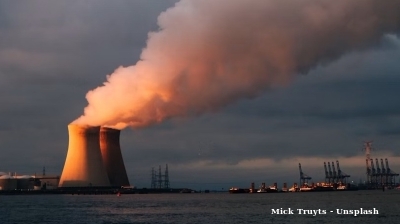Deposit growth at Indian banks is projected to remain adequate in FY2025-26, supported by an improved liquidity environment and regulatory measures that are expected to sustain credit expansion of 11–12%, according to Crisil Ratings. However, the rating agency flagged two underlying structural shifts—a decline in household participation in term deposits and a fall in the share of low-cost current and savings account (CASA) deposits—that could influence funding stability and cost dynamics over the longer term.
Crisil noted that overall deposit growth should remain healthy, helped by the Reserve Bank of India’s (RBI) proactive liquidity management. Since April 2025, the system has maintained adequate liquidity after a prolonged tight phase. The phased 100-basis-point reduction in the cash reserve ratio (CRR) has released significant liquidity into the system, equivalent to over 1% of total outstanding deposits. Further support will come from the relaxation of liquidity coverage ratio (LCR) norms.
While deposit growth is on track, the changing composition of deposits could have implications for long-term funding stability. Crisil’s analysis shows a noticeable decline in the share of household deposits—historically the most stable funding source for banks. The proportion of household deposits in total bank deposits fell from 64% in FY2020 to 60% in FY2025, while the share of non-financial corporates increased by four percentage points.
This shift, Crisil said, is primarily due to households allocating less of their financial savings to bank deposits and instead opting for alternative investment avenues such as mutual funds and market-linked instruments. As a result, the share of households in incremental deposits dropped from 67% in FY2020 to 52% in FY2025.
Corporate deposits, which have partly replaced household funds, tend to be more interest-rate sensitive and are often held for shorter durations. This makes them more volatile during tight liquidity periods, potentially increasing banks’ funding costs and leading to faster deposit withdrawals. Crisil expects the share of household deposits to decline further as alternative investments gain wider acceptance among retail investors.
The decline in household deposits is especially evident in term deposits, where their share has fallen from 58% to 54% over the past five years. Meanwhile, the household share in CASA deposits has seen only a marginal reduction. Still, the overall CASA ratio—regardless of depositor type—has declined sharply, dropping to about 36% as of June 2025 from a 25-year high of over 42% in March 2022.
The CASA ratio had surged after demonetisation and again between 2019 and 2022, when low term deposit rates during the pandemic encouraged customers to park funds in savings and current accounts. With interest rates on term deposits rising from 2022 onwards, CASA balances have increasingly shifted into higher-yielding term products. Within CASA, current deposits have remained largely range-bound, while savings deposits have declined significantly.
Crisil noted that the growth of savings deposits hit a ten-year low in FY2025, accounting for only about 10% of incremental deposits. The recent reductions in savings account interest rates by several banks could further depress growth in this segment. This trend, the agency cautioned, is significant because CASA deposits not only provide banks with a low-cost funding base but also contribute to deposit stability. A sustained decline in CASA ratios, along with a falling household share in term deposits, underscores the need for banks to actively manage deposit stability and pricing risks.
Deposits account for over 90% of Indian banks’ total borrowings, making them critical for supporting credit growth and profitability. Crisil expects banks to continue diversifying funding sources—through the bond market and securitisation—to offset potential liquidity and cost pressures.
Gross NPAs expected to stay low at 2.3–2.5%
A separate Crisil report highlighted that the banking sector’s asset quality remains strong, with gross non-performing assets (NPAs) expected to stay between 2.3% and 2.5% by the end of March 2026—close to the historical low of 2.3% recorded a year earlier.
Corporate credit, which makes up the largest segment of bank lending, is projected to remain stable thanks to strong balance sheets and improved profitability across most industries. However, Crisil expects NPAs in the micro, small and medium enterprises (MSME) segment to inch up slightly, driven by export-oriented businesses affected by recent tariff hikes announced by the US, as well as the natural seasoning of loans after several years of high growth.
MSME NPAs have declined sharply in recent years, from 8.7% in FY2021 to 3.6% in FY2025, aided by schemes such as the Credit Guarantee Fund for Micro Units (CGFMU) and the Emergency Credit Line Guarantee Scheme (ECLGS). Improved formalisation within the MSME sector has also enhanced data availability, enabling banks to refine their underwriting and monitoring frameworks. The share of accounts classified as Special Mention Account-2 (SMA-2) fell to 0.8% in FY2025 from about 1.2% a year earlier.
Nonetheless, Crisil expects MSME NPAs to rise moderately to around 3.7–3.9% in FY2026 due to the impact of the US tariff measures on sectors such as textiles, garments, gems and jewellery, seafood, and select chemicals.
In the corporate loan portfolio—constituting around 38% of total bank credit—gross NPAs are likely to stay stable at 1.4–1.5% by March 2026. Crisil estimates the average gearing of its rated corporate portfolio at 0.4–0.55 times and interest coverage at around 5.3 times, underscoring resilience in the segment.
Retail asset quality also remains robust, with gross NPAs steady at 1.2% in FY2025. Housing loans, which form over half of the retail portfolio, continue to demonstrate strong performance across cycles. However, the unsecured retail segment, accounting for about a quarter of retail credit, remains an area of concern.
Banks have pursued aggressive write-offs in the unsecured category, which kept the overall gross NPA ratio in check at 1.8% in FY2025 compared with 1.5% in FY2024, despite elevated slippages. Crisil expects retail NPAs to remain around 1.2% in FY2026, though the proportion of delinquent unsecured loans (measured by the SMA ratio) remains high at 7.4%.
The agency cautioned that while reported NPAs are likely to stay contained, higher slippages in unsecured loans could translate into higher credit costs over time.
Features

What Central Asia wants out of the upcoming Washington summit
Clarity on critical minerals and a lot else.

Global leaders gather in Gyeongju to shape APEC cooperation
Global leaders are arriving in Gyeongju, the cultural hub of North Gyeongsang Province, as South Korea hosts the Asia Pacific Economic Cooperation summit. Delegates from 21 member economies are expected to discuss trade, technology and security.

Project Matador marks new South Korea-US nuclear collaboration
Fermi America, a private energy developer in the United States, is moving ahead with what could become one of the most significant privately financed clean energy projects globally.




